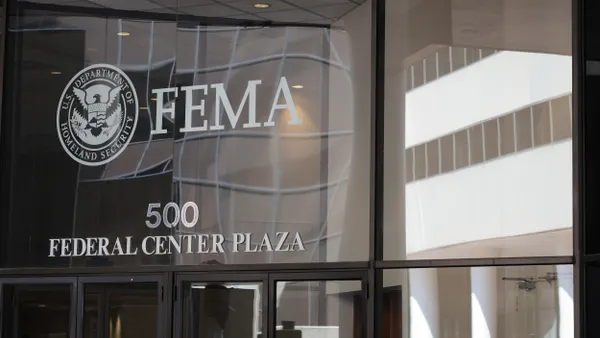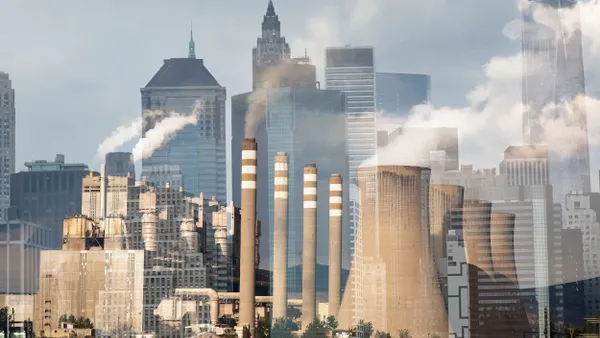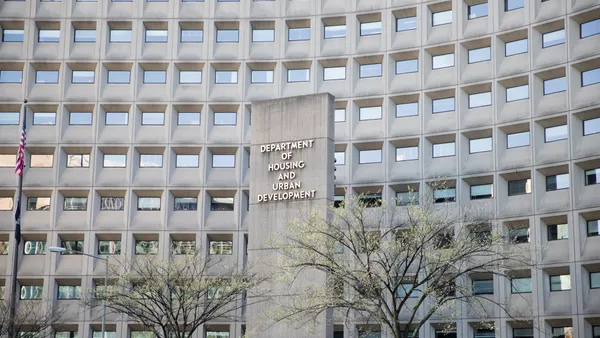Dive Brief:
- The City of San Diego Planning Department is seeking public feedback as it develops a climate resilience plan focused on preparing for sea level rise, flooding and drought, extreme heat and wildfires — risks backed up by a climate change vulnerability assessment completed early last year. The Climate Resilient SD plan would build on the city’s Climate Action Plan released in 2015.
- A survey seeking residents' anecdotes on how climate change has already impacted their communities, and gauging residents' resilience priorities going forward, closes Friday. The planning department will then analyze responses before distributing a second survey. It aims to release a draft version of the plan this summer with a goal of submitting it to the city council for approval by year's end.
- Ultimately, San Diego is looking to adopt adaptation strategies to minimize the city's vulnerability to climate change hazards, thereby protecting "people, economy, infrastructure, and natural resources."
Dive Insight:
In addition to taking in public input, the San Diego Planning Department is also aiming to educate its residents about the importance of resiliency in the face of climate change.
"Not everyone even understands the distinction between climate mitigation, which is essentially trying to reduce GHG emissions, versus what we're working on. And it's really: how do we plan our city to make sure that we're in a good position to face these threats that we know are going to happen," said Mike Hansen, the city's planning director.
While other major cities, including Boston and New York, preceded San Diego in developing climate resilience plans, their vastly different scenario projections limited how helpful they may be as guiding lights, Hansen said.
"We actually have pretty different climates just within the city of San Diego," Hansen said, noting geographies ranging from coast, to mountainous areas, to agricultural lands, to canyons. "So probably compared to most major cities, we have a lot of the different 'issue areas' of climate change that we're really thinking about."
Locals largely understand the value of resilience planning, Hansen said, having experienced significant wildfires and cliff erosion in recent decades.
Planning Department Deputy Director Heidi Vonblum added: "We have a very [geographically as well as demographically] diverse jurisdiction. And one of the goals of the plan is to prioritize adaptation strategies in areas where the populations are more vulnerable to climate change with less capacity and resources to be able to easily adapt."
The public survey, available in five languages, questions residents on how to weigh goals concerning:
- building a resilient and equitable city
- connecting communities and informing them about climate impacts
- recognizing the importance of, and protecting, historic and tribal cultural resources
- protecting biodiversity and preserving and restoring the natural environment
More specifically, those goals cover preparing for, responding to, recovering from, and informing the public on climate hazards; prioritizing vulnerable communities; increasing green space and natural shade; making walking, biking and recreation options more accessible; fostering connections between neighbors; preserving historic tribal cultural resources, and sharing traditional knowledge of land management and cultural significance; being able to have clean air and water; and maintaining plant and animal diversity.
The importance of preempting disruptive and dangerous effects of a changing climate is again in the national spotlight this week, with Texas a shining example of the costly consequences that can occur for regions left unprepared.
"Whenever there's any kind of natural disaster, then there's quicker engagement on resilience discussions. The general population, the decision makers — they'll all be a little bit more attuned to the fact that these plans need to be made," said Amy Bailey, director of sustainability and engagement at the Center for Climate and Energy Solutions (C2ES).
For cities that haven't yet leaned into resilience planning, Bailey and colleague Laura Brush, resilience lead at C2ES, hope more cities will consider future economic competitiveness implications. Brush said a recent report they worked on revealed minimal overlap between cities' resilience or sustainability plans and their economic development plans.
There's no singular motivator that is driving governments to pursue these plans, said Natural Resources Defense Council's Rob Moore, director of the water and climate team. But one additional economic consideration may be that rating agencies have increasingly been pressing local governments seeking bonds on how they factor future climate impacts into revenue projections.
"The writing is clearly on the wall that fortune will favor those communities who are prepared for the future," Moore said. "Given what we know about climate change, given the projections that are out there, these are now entirely foreseeable events."
Resources available to carry out resilience planning may be poised to grow. For one, multiple sources pointed to possible expansion of the Building Resilient Infrastructure and Communities program, or BRIC, launched under the Federal Emergency Management Agency last year following the Disaster Recovery Reform Act of 2018. The initial grant cycle, which closed at the end of January, made $500 million available for states, local governments, tribes and territories pursuing pre-disaster hazard mitigation projects.
President Joe Biden did quickly reinstate an Obama-era executive order intended to have all federal agencies prioritize climate adaptation preparations. But the new administration, for all of its emphasis on climate expertise and action thus far, does not feature a climate adaptation-specific role, Moore noted.
Coordinated efforts emerged on resilient cities in 2013 following destruction in the Northeast from Hurricane Sandy. The Rockefeller Foundation established the 100 Resilient Cities program, which in part seeded Chief Resilience Officer positions in cities. Although the foundation ceased support for the program in 2019, citing shifting priorities, the former program president launched a new nonprofit called Resilient Cities Catalyst last year. Additionally, former member cities banded together once again under the Global Resilient Cities Network.











